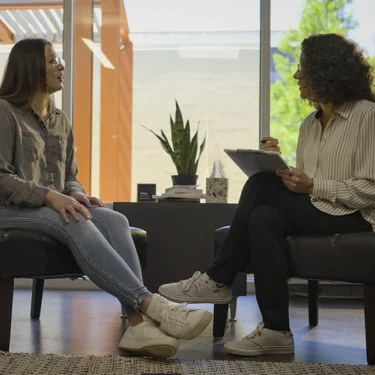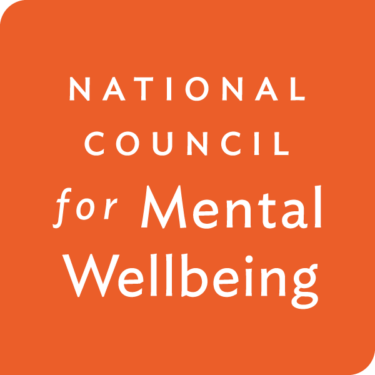Addressing substance use in adolescence is an important opportunity to positively impact the lives of youth. The earlier youth start using substances, the greater their chances of having a substance use disorder later in life. Different factors — some biological or psychological, others social or environmental — give youth greater protection from or increased risk of substance use. Things like participation in structured after school activities, supportive family relationships, and positive self-esteem can all impact whether a youth uses substances.
A lack of substance use education and intervention on behalf of a parent or caregiver can heighten the risk for substance use challenges in youth. Resources aimed at prevention and early intervention are crucial to helping address and mitigate youth substance use.
Youth Screening, Brief Intervention, and Referral to Treatment (YSBIRT) is an evidence-based practice designed to identify, reduce, and prevent alcohol and drug use among adolescents ages 12 to 18. The foundation of YSBIRT focuses on engaging with youth to normalize the conversation around substance use and encourage healthy lifestyle choices.
To learn more about YSBIRT, Maura Gaswirth, LICSW, Director spoke with the National Council’s Laura Leone, DSW, MSSW, LMSW, Integrated Health Consultant, Pam Pietruszewski, MA, Senior Advisor and Aaron Williams, MA, Senior Advisor. They have all been at the forefront of expanding the YSBIRT model to healthcare providers and organizations across the nation. In this interview, they explain the importance of the YSBIRT model, along with the trends, successes, and challenges that they’ve seen from their work.
Maura Gaswirth: Why is YSBIRT important for us to be thinking about?
Pam Pietruszewski: When adults in a health or social service setting interact with young people, it’s an opportunity to impact the trajectory of those youth’s lives. We want to give youth the tools that allow them to develop into healthy adults. We must start these prevention measures early because that’s inherently when they’ll be exposed to substances and substance use. When youth-serving organizations normalize these conversations and make YSBIRT a routine part of service delivery, they’re putting themselves on the path to having an incredibly positive impact on the lives of the youth they serve.
Aaron Williams: A lot of research suggests that delaying the onset of substance use has many benefits. Those who delay first use have less problems with substances further down the road. In addition, those who use substances later in life and end up dealing with a substance use challenge resolve those issues more quickly than those who started using at a younger age.
With YSBIRT, we want to help individuals at a young age begin to think about mental wellbeing and substance use as an intrinsic part of their health. In addition, substance use is highly implicated in a host of other health conditions, so why not begin having these conversations with youth to have them start thinking about how they can take ownership of their health.
How does the YSBIRT model benefit youth-serving organizations?
Laura Leone: With organizations, very often, they’re doing pieces and steps of the SBIRT process already. What’s wonderful about the SBIRT model is that it’s an approach to cohesively connect the steps together. The model allows for staff to feel confident and competent in proceeding with the screening, brief intervention, and the referral to treatment process in a very specified and structured way that ensures healthcare staff deliver care in an optimized way to our youth.
What trends are you seeing in consulting with YSBIRT?
Aaron Williams: A positive trend is that healthcare organizations have increasingly become interested in youth-related health screenings. With mental health and substance use-related matters becoming more recognized, we see an uptick in organizations that have started to understand the value of providing these services.
Pam Pietruszewski: Young people have also played a role in helping to generate the positive interest we’re seeing with the YSBIRT model. Youth now more than ever before are helping to break the stigma associated with mental health and substance use issues. We want youth to lead the way and tell us what they need. If youth have a trusted adult who routinely engages in these conversations, we can revolutionize how we care for young people.
What are some challenges you are seeing in consulting with YSBIRT?
Pam Pietruszewski: Competing priorities are a common challenge many organizations face when implementing new initiatives like the YSBIRT model. With the pandemic, healthcare providers and organizations have been stretched to their limits trying to manage their time and resources, which has made it hard for some organizations to commit themselves to implement the YSBIRT model.
Aaron Williams: Getting the necessary screens, checks, and referrals in place from the YSBIRT model can be tricky for some organizations. Providers may only have ten or so minutes with each patient. Within that short period, a provider is addressing many needs, so it can be difficult to find time to conduct YSBIRT services properly. Our job as advisors and consultants is to help organizations implement tools that will keep them moving forward to maximize patient health and good outcomes and not slow down productivity.
Pam Pietruszewski: Another critical challenge is confidentiality, which makes YSBIRT very different from SBIRT for adults. We want adolescents to feel comfortable talking about potentially sensitive topics like substance use with their care provider. However, youth may not acknowledge substance use if a parent or caregiver is present during the screening process. Therefore, an organization should ask itself how it can change confidentiality expectations for youth, parents, and caregivers while at the same time making sure not to interrupt the organization’s workflow or the way the patient is used to receiving care.
What would you like organizations to know about YSBIRT?
Laura Leone: It’s not a one size fits all model. There are many ways to do YSBIRT. Sometimes there’s a fear that there’s a rigidity around the structure of how to do SBIRT for youth. I want to let people know that you can be creative and look within your system to make the model work. It is also helpful for organizations to know that they don’t have to wait for everything to be perfectly in place to start YSBIRT services. Implementation should be viewed as a quality improvement process. I’d recommend that organizations seeking to implement YSBIRT services begin with a designated core implementation team. Think about having various staff and staff roles responsible for the multiple steps (screening, intervention, referral to treatment) of the model. And finally, make sure to have champions or people that can dedicate time to the YSBIRT implementation, pilot the program, and give good open feedback. The YSBIRT process with patients is often not as extensive and time-consuming as staff think it will be. this is a model that has been developed for a general population, and every screened patient will not be experiencing a substance use challenge or require a lengthy follow-up plan.
Pam Pietruszewski: YSBIRT can start a culture shift for many organizations. We want patients to be aware of the connection between substance use and overall health, and thus expect SBIRT services as part of a health checkup. As youth progress into their teenage years, YSBIRT is an ongoing opportunity for brief conversations; showing youth we are open and interested in whatever substance use challenges they may face during those pivotal years of their lives. The better we get at having those conversations early and engaging with youth, the sooner we can intervene and reduce the likelihood of a substance use challenge.
Aaron Williams: The more healthcare professionals screen and intervene around substance use issues, the more opportunities youth and people, in general, will have to get access to the services they need. Substance use challenges are not uncommon, and providers need to be operating with that in mind.
In collaboration with the Conrad N. Hilton Foundation, the National Council for Mental Wellbeing created the Improving Adolescent Health Facilitating Change for Excellence in YSBIRT, a change package toolkit. Improving Adolescent Health Facilitating Change for Excellence in YSBIRT was created with the help of experts and piloted by health centers to account for real-world experiences. The toolkit contains guides, tips, and tricks designed to help organizations successfully implement YSBIRT services. Check out the toolkit!
Guest Author
Communications Intern
National Council for Mental Wellbeing


